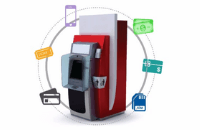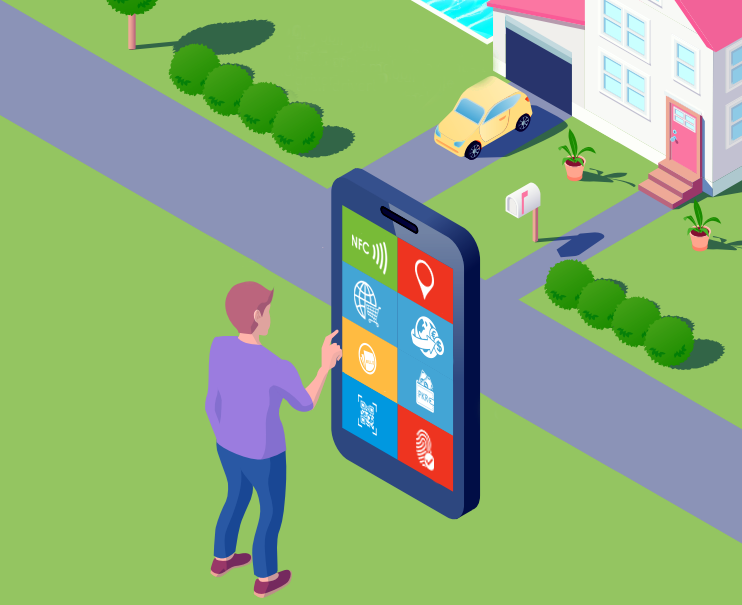Smartphone usage has been on the rise in Pakistan and its about time businesses in the country started jumping the bandwagon. It is an exciting time for these businesses since they can very easily extend their services and be present on the palm of their customers when required.
With an average user having access to global businesses through their mobile phones, one has to stop and compare the differences in quality of services that are being offered. Unfortunately the local industry is still not treating mobile channel as a first-class citizen and this has to change sooner. It is evident when you look around and see the quality of mobile apps by local businesses. There are a few exceptions but overall the situation doesn’t seem quite satisfactory. These apps are merely resized versions of their web counterparts with jumbled up user interface and confusing user experience. This is also true for mobile banking apps currently available.
Banking is already complex and confusing mobile experiences are not helping either. There is a huge change in mindset required to fix this situation and it is time for banks to understand the importance of turning things around. This is the age of design thinking and banks must either up their game on mobile innovation and design or trust their technology vendors to lead them to the right direction.
In this brief post, you are going to explore some key areas and I hope that by understanding them, you should be able to start considering things in a different perspective and start improving.
Embrace global design trends
Having the right inspiration contributes a lot towards creating a beautiful design. A beautiful design doesn’t only mean using flashy color scheme or images, it also means having a cleaner, simpler design that doesn’t interfere with the user experience. In fact, a beautifully crafted app helps users achieve their goals quickly and seamlessly. There must be a lot of synergy between different elements of an application. You need to keep in mind the best practices of designs that industry leaders have devised.
It is a fact that the quality of the apps created in Silicon Valley and the likes is top-notch and you should observe the patterns used in successful apps. You can take inspiration and learn from quality designs even if they don’t cater to the needs of the domain you are targeting. Apple and Google both regularly organize design awards for apps published on their respective stores. I highly recommend you to frequently check these apps for inspiration.
Another way to learn better design principles is to explore platform-specific guidelines. Apple follows a flat design philosophy and their guidelines can be found here while Google announced Material Design a couple years back which is the primary guideline for Android.
Material Design guidelines is something I encourage designers to explore in depth. The guidelines cover everything from overall theme, fonts and branding to individual controls. The best part of these guidelines is that they can be adapted on web, Android and iOS with only few platform-specific tweaks in design.
Improving the design process
To design better apps, you need to introduce some discipline in your design workflow. The most simplistic workflow could be:
- First off, always start with a simple wireframe. You can sketch on a whiteboard or draw on a paper. Wireframes act as a tool to finalize the layout of screens without bringing in theming and branding concerns.
- Get feedback on the wireframes and then move on to create mockups.
- Create mid-fidelity mockups using tools such as Sketch, Figma or Gravit. You can also use Adobe Photoshop but that’s too complex for this phase.
- Get feedback on the mockups as well to establish branding, color schemes and overall theme of the app and move on to create a prototype.
- An interactive prototype helps a lot in getting the end-users’ feedback without jumping into code. This saves a lot of time and gives clarity to the developers and designers towards creating a better user experience. Some of the better prototyping tools are InVision and Marvel.
- Get feedback from end-users on the interactive prototype and finalize the app UI and UX.
In addition to these steps, it’s always a good idea to do some user research and get a deeper understand of your users’ needs and problems.
There’s also an increasingly popular and effective way to design, prototype and test new and innovative ideas with customers. This is usually a five-day process known as Design Sprint. I introduced it in TPS last year and the stakeholders simply love it. I highly encourage you to try it out so you’re able to solve critical problems through this process.
Focusing on performance
Performance is one of the most important aspect of mobile apps in particular. It is hard to retain users if your app feel jittery and laggy. Developers can improve an app’s performance by simplifying the UI. They should display only necessary information, avoid unnecessary animations and imagery, and select a good development tool. For example, hybrid apps perform worse compared to native apps.
Using platform features
Mobile platforms have been evolving with rapid pace. We get newer versions of these platforms every year with many exciting features. It is important to keep up with the pace and introduce these features to create a pleasant user experience. Some of the features are:
- Fingerprint, Facial and Voice recognition for authentication.
- 3D touch (iOS 9 and above) and app shortcuts (Android 7.1.1 and above).
- Widgets for performing different tasks quickly
- Voice assistants (Siri, Google Assistant, Bixby, Cortana, Alexa).
Our mobile banking solution already has most of these features available and our team is on its toes to introduce other features in their next release.










Leave A Comment